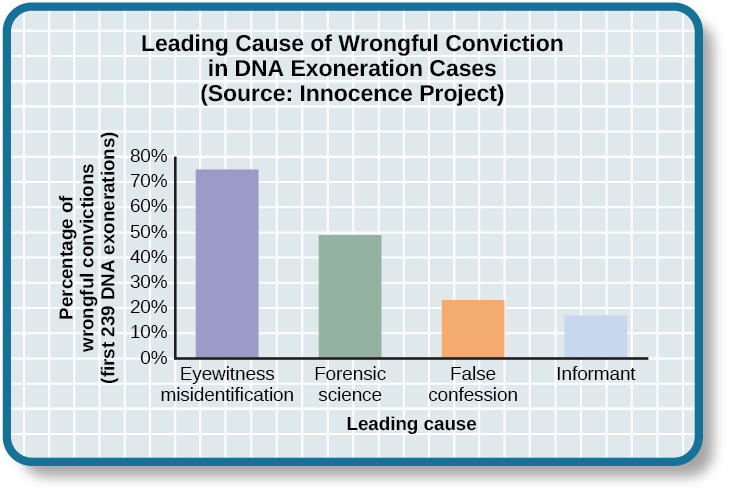| << Chapter < Page | Chapter >> Page > |
The formulation of new memories is sometimes called construction , and the process of bringing up old memories is called reconstruction . Yet as we retrieve our memories, we also tend to alter and modify them. A memory pulled from long-term storage into short-term memory is flexible. New events can be added and we can change what we think we remember about past events, resulting in inaccuracies and distortions. People may not intend to distort facts, but it can happen in the process of retrieving old memories and combining them with new memories (Roediger and DeSoto, in press).
When someone witnesses a crime, that person’s memory of the details of the crime is very important in catching the suspect. Because memory is so fragile, witnesses can be easily (and often accidentally) misled due to the problem of suggestibility. Suggestibility describes the effects of misinformation from external sources that leads to the creation of false memories. In the fall of 2002, a sniper in the DC area shot people at a gas station, leaving Home Depot, and walking down the street. These attacks went on in a variety of places for over three weeks and resulted in the deaths of ten people. During this time, as you can imagine, people were terrified to leave their homes, go shopping, or even walk through their neighborhoods. Police officers and the FBI worked frantically to solve the crimes, and a tip hotline was set up. Law enforcement received over 140,000 tips, which resulted in approximately 35,000 possible suspects (Newseum, n.d.).
Most of the tips were dead ends, until a white van was spotted at the site of one of the shootings. The police chief went on national television with a picture of the white van. After the news conference, several other eyewitnesses called to say that they too had seen a white van fleeing from the scene of the shooting. At the time, there were more than 70,000 white vans in the area. Police officers, as well as the general public, focused almost exclusively on white vans because they believed the eyewitnesses. Other tips were ignored. When the suspects were finally caught, they were driving a blue sedan.
As illustrated by this example, we are vulnerable to the power of suggestion, simply based on something we see on the news. Or we can claim to remember something that in fact is only a suggestion someone made. It is the suggestion that is the cause of the false memory.
Even though memory and the process of reconstruction can be fragile, police officers, prosecutors, and the courts often rely on eyewitness identification and testimony in the prosecution of criminals. However, faulty eyewitness identification and testimony can lead to wrongful convictions ( [link] ).


Notification Switch
Would you like to follow the 'Chapter 8: memory sw' conversation and receive update notifications?